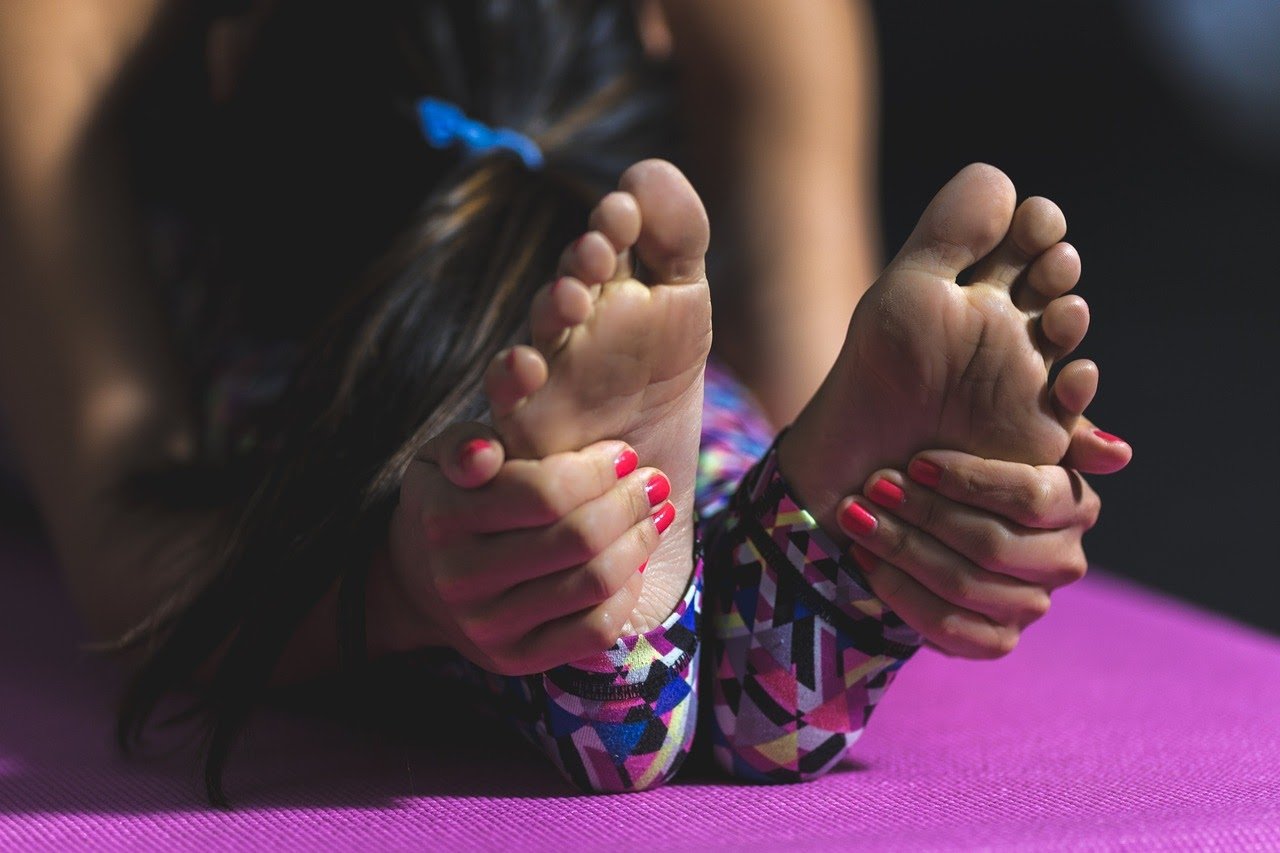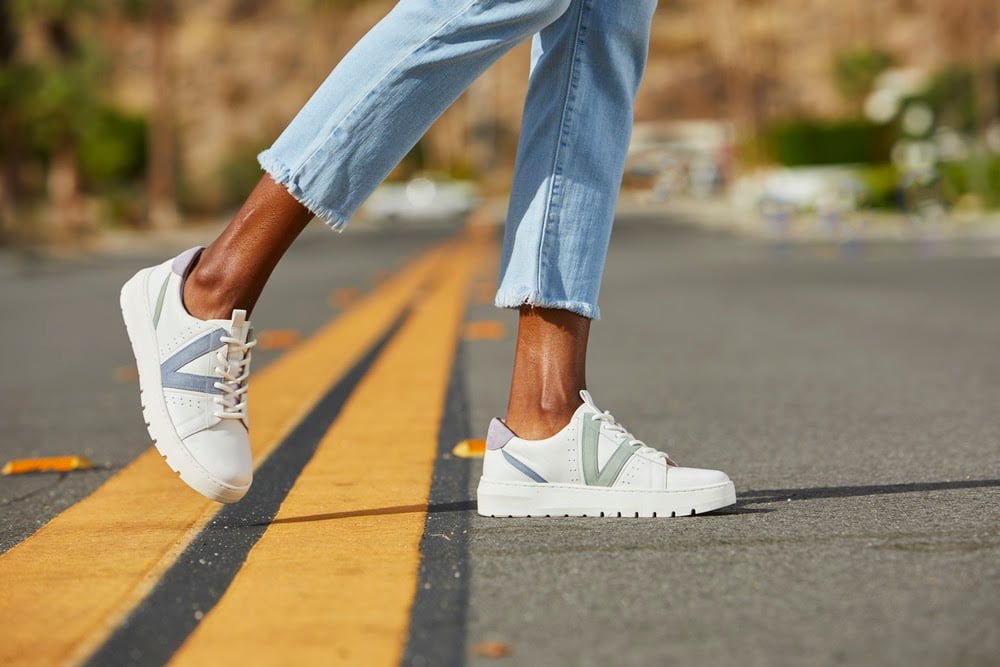
Many people are familiar with a certain type of pain—2 million Americans every year, to be exact.¹ This is a specific pain that comes with walking, running, or being on your feet all day. A frustrating pain in the foot that’s really a pain in the you know what.
That’s right, today we’re talking about plantar fasciitis! Those who suffer from this common condition know the telltale signs of an inflamed plantar: tenderness and pain that radiates from the arch of the foot into the heel bone. The inflammation from this condition might also cause the development of a heel spur.
Knowing the symptoms of plantar fasciitis is only half the battle, though. The question remains: how does one deal with these symptoms and get to the root of the problem? For more information on plantar fasciitis, including how compression socks and shoes for plantar fasciitis can help treat this condition, keep reading!
WHAT IS PLANTAR FASCIITIS?
Dealing with any medical problem tends to be a whole lot easier if you understand what’s going on. Plantar fasciitis is a condition that affects—unsurprisingly—a body part called the plantar fascia. The plantar fascia is a thick ligament that supports the arch of the human foot and makes walking possible.² This plantar fascia ligament fans out toward the toes and also reaches back and attaches to the heel—at least, it’s supposed to.
When plantar fasciitis occurs, it’s because the plantar fascia is inflamed and possibly suffering from microtears. This is why tenderness, pain, and even swelling are some of the signs of plantar fasciitis. This foot pain can be either dull or sharp and typically arises when a person is walking or running. The pain will often subside during times of rest.
Unfortunately, people who suffer from plantar fasciitis can’t sit around all day simply because of their pain. With places to be and things to do, there must be a solution to this problem. So, how does a plantar fasciitis sock get people back on their feet?
HOW DO COMPRESSION SOCKS WORK?
You may be familiar with the idea of compression socks. This type of footwear is often used by healthcare and restaurant workers to prevent foot and ankle swelling during long shifts. Compression socks are also used in the treatment of painful varicose veins.
What you may not be familiar with are the many benefits of using a compression sock for plantar fasciitis. Here’s how it works:
- Arch support – Unlike the flimsy structure of a regular sock, a compression sock offers greater support for your arch and heel. While this won’t provide as much support as an orthotic insert, compression socks can significantly reduce arch pain and heel pain when walking around without shoes.³
- Swelling – Compression socks are known to reduce swelling—and plantar fasciitis is no stranger to painful inflammation. If you’ve noticed your condition has reached a point of swelling, a pair of compression socks can help prevent further inflammation and damage to the ligament.⁴
- Ankle relief – A bad case of plantar fasciitis can cause pain to radiate all the way up the ankle and cause severe ankle pain. By wearing compression socks that cover this area, you may be able to keep plantar fasciitis pain more localized, provide ankle support, and stop symptoms from spreading any further.
- Cramps – Another common symptom of plantar fasciitis is cramping in the foot and leg. Cramps occur when muscles tighten up into a shortened position, making movement difficult. Compression socks can prevent these painful cramps and provide plantar fasciitis relief by keeping the muscles and ligaments in an elongated state.⁵
Basically, the short answer is yes: compression socks can help with plantar fasciitis. The long answer is a bit more complicated, though. Take a look at the specifics on how to use compression socks to treat an inflamed plantar fascia.⁶
WHO CAN WEAR COMPRESSION SOCKS?
While many people are able to use compression socks, this type of footwear isn’t for everyone. Compression of feet and ankles should be done carefully and responsibly otherwise additional problems can pop up.
Certain conditions can make compression socks a bit riskier. If you experience any of the following medical issues, you may want to consult a doctor before purchasing a pair of compression socks or any type of foot compression sleeve:
- Diabetes
- Peripheral vascular disease
- Poor blood circulation
Those who don’t live with these conditions should be able to reap the benefits of compression socks for their plantar fasciitis, but this poses another question: when should you wear them?

WHEN SHOULD YOU WEAR COMPRESSION SOCKS?
As wonderful as compression socks are, they’re not a second skin. It’s important to understand when to wear a compression sleeve or compression socks and when not to. Here’s are the dos and don’ts for wearing these handy stockings:
- Nighttime – If you experience plantar fasciitis pain when trying to fall asleep, wearing compression socks to bed may help. Ideally, nighttime use of a plantar fasciitis compression sock will help reduce swelling and make your first steps of the morning a bit more comfortable.
When choosing a pair for evening use, you may want to go easy on the compression level. If your stockings are too tight, you risk cutting off blood flow to the area while you’re asleep—nobody likes waking up to a numb foot!
- Exercise – The worst pain from plantar fasciitis typically occurs during exercise. If you’re walking or running, a pair of compression stockings can help ease aching and tenderness long enough to complete your workout.
Keep in mind, however, that exercise can make an inflamed plantar fascia worse—even if your compression socks are providing pain relief. Always start your movement slowly, and remember to let your feet rest if you’re experiencing discomfort. A light, breathable pair of compression socks is going to work best when exercising.
- Sitting – If you spend a good chunk of your day sitting, compression socks can actually be utilized during times of rest. When you’re seated, fluid can travel down toward your feet and cause further swelling and inflammation of the plantar fascia and surrounding tissue. Although you may not feel it happening, the results will quickly become obvious once you stand up again: causing even more pain than before. Wearing socks with a moderate compression level during the day can lead to easier steps later on.
So, when shouldn’t you wear compression socks? The answer to this will vary from person-to-person. The general rule of thumb, however, is that compression socks should be removed if you’re experiencing numbness, discoloration, or worsening discomfort and pain. Compression socks are just one tool of many for preventing plantar fasciitis.
WHAT ARE THE DIFFERENT KINDS OF COMPRESSION SOCKS?
Hunting for the perfect pair of plantar fasciitis socks? If you’re scouring local brick-and-mortar stores as well as online retail spaces, you’re likely to come across a variety of brands and variations of medical footwear. This could make the hunt for the correct compression socks a little more complicated, but with guidance, you’ll have no problem picking out the socks to keep your feet feeling their best.
Consider the following criteria when investigating different types of compression socks:
- Length –Ankle high, thigh high, or even compression tights could be advisable depending on your condition. When it comes to plantar fasciitis, you’ll likely be able to wear the shortest socks available, as you’re dealing with foot pain. That said, you might consider the added benefits of compression and opt for longer socks that could provide additional comfort.
- Compression level –As already mentioned, compression can vary from sock to sock. Compression is typically measured in mm/hg (the standard way of measuring blood pressure). Socks may vary from 8-15 mm/hg to 30-40 mm/hg depending on their firmness.⁸ You may need to experiment with compression levels to determine which brings the most relief to your plantar fasciitis pain. Consider picking up a few different pairs of socks for a first-hand test.
- Purpose –While standard graduated compression socks and non-medical support hosiery can offer support to plantar fasciitis, anti-embolism stockings aren’t usually ideal for this problem.9 It may be easy to mistake one type of compression sock for another, so check thoroughly that you’re purchasing a sock aimed at increasing mobility, reducing swelling, and mitigating pain.
If you’re struggling to find the right socks, consider speaking to your medical provider for suggestions. Additionally, specialists in the field of orthopedics may be able to provide you with tests or samples to determine what kind of compression socks could bring you the best results.
WHAT ELSE CAN HELP PLANTAR FASCIITIS?
Compression socks only scratch the surface of plantar fasciitis foot care. If you’re looking to maximize healing and comfort, here are some other ways to effectively treat a case of plantar fasciitis:⁷
- Medication – Prescription medication isn’t needed to treat an inflamed plantar fascia. A simple analgesic, like Advil or Tylenol, can effectively reduce both pain and swelling, which will speed up the healing process.
- Physical therapy or chiropractic work – A physical therapist can help treat serious cases of plantar fasciitis. With easy movement, strength training, and stretching, the right physical therapy routine will not only heal an inflamed plantar fascia but prevent future instances of this condition. In addition, many people wonder if plantar fasciitis and chiropractic work even go together. A chiropractor can help you evaluate the whole picture of how your body is operating to fix issues at their core.
- Orthotics – Orthotic insoles can be prescribed by a doctor or purchased over the counter. Either way, cushioning the sole of your shoe and adding additional arch support can reduce the weight on an inflamed plantar fascia and give it an opportunity to heal. Walking and running may be less painful with the right insoles, as well.
- Shoes – Perhaps the most lasting change you can make to treat plantar fasciitis is wearing the right shoes. Flat-soled or ill-fitting footwear is a common cause of inflammation in the foot, and getting the proper support from your shoes will not only treat this condition but also prevent it in the first place. It’s important to find a shoe that supports the contours of your foot and provides a structure for proper alignment of the legs and spine.10
- Ice and heat – Finally, targeted use of ice and heat can help ease discomfort and promote the healing of plantar fasciitis. Icing the area will reduce inflammation and prevent further damage to the ligament, while heat can help relax the muscle and stop cramping.
Once you add these practices to your treatment toolbox, the plantar fasciitis pain will soon become a thing of the past and you will start experiencing the signs plantar fasciitis is healing. While short-term relief—from medication and ice—is great, lifestyle changes, like new shoes, will have the biggest impact in the long run.
Are you in the market for a pair of everyday shoes to ease your plantar fasciitis? Look no further than Vionic!

VIONIC: YOUR PLANTAR FASCIA’S NEW BEST FRIEND
Most shoe companies don’t even think about plantar fasciitis, much less offer a solution to it. That’s what makes us different.
Here at Vionic, we make stylish, comfortable shoes for real people. With our selection of heels, sneakers, boots, and even sandals, there’s a Vionic shoe fit for any occasion. Every Vionic shoe comes with a biomechanical footbed that provides arch support, proper alignment, and increased cushioning to relieve pain.
Stop sacrificing fashion for support, and get the perfect combination of both with Vionic!
Sources:
1. Linda Searing. “The Big Number: 2 million Americans get treated for heel pain caused by plantar fasciitis”. The Washington Post. Nov 25, 2019,.https://www.washingtonpost.com/health/the-big-number-2-million-americans-get-treated-for-heel-pain-caused-by-plantar-fasciitis/2019/11/22/0dfe89e8-0c7a-11ea-97ac-a7ccc8dd1ebc_story.html
2. “Plantar Fasciitis”. Mayo Clinic. https://www.mayoclinic.org/diseases-conditions/plantar-fasciitis/symptoms-causes/syc-20354846
3. “Compression Socks and Plantar Fasciitis”. Sole science. https://www.solescience.ca/compression-socks-plantar-fasciitis
4. “How do compression sleeves for the arms and legs reduce muscle cramping?”. ShareCare.
https://www.sharecare.com/health/bone-joint-muscle-health/how-compression-sleeves-muscle-cramping
5. “What You Need to Know About Compression Socks Before You Buy.”. Oklahoma Heart.
https://oklahomaheart.com/blog/what-you-need-know-about-compression-socks-you-buy
6. “Plantar Fasciitis”. Vionic Shoes. https://www.vionicshoes.com/aches-and-pains/plantar-fasciitis
7. “Plantar Fasciitis”. Mayo Clinic. https://www.mayoclinic.org/diseases-conditions/plantar-fasciitis/symptoms-causes/syc-20354846
8. “Plantar Fasciitis”. Vionic Shoes. . https://www.vionicshoes.com/aches-and-pains/plantar-fasciitis


Leave a Reply